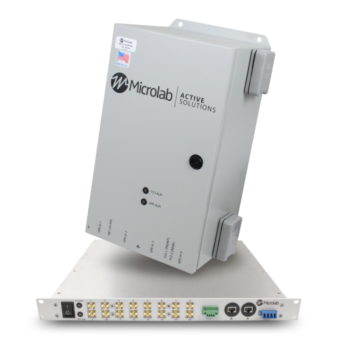Wireless Telecom Group (NYSE American: WTT) announced yesterday that the Microlab Digital GPS Repeater was selected by Anziva Technologies for the new Distrito T-Mobile entertainment venue in Puerto Rico to enable network synchronization for its cellular communication network. The Microlab Digital GPS Repeater, with Digital SkyTiming Technology™, provides future-proof network synchronization for both 4G deployments and the tighter timing demands of 5G.
“We recently completed a DAS deployment at District Live in San Juan, PR. Due to the complexity of the property and the project itself, especially esthetics, it was simply impossible to install a typical coaxial GPS system anywhere close to our head-end,” said Israel Aviles, Partner at Anziva Technologies. “The Microlab Digital GPS Repeater was the perfect solution for us considering that our facility includes multiple exterior locations connected to our headend through our fiber optic backbone. We intend to standardize our facilities on this excellent solution, Microlab has come up with an outstanding, simple to install, easy to deploy, solution.”
“Our Digital GPS Repeater is a high-performance network synchronization solution that delivers the precise phase delay measurements required to address the unique scheduling demands of Anziva Technologies” says Dino Giordano, VP of Engineering. “Our expertise in delivering specialized solutions has enabled us to address the specific frequency and phase synchronization challenges facing current and emerging cellular communications networks in play with this deployment.”
The Microlab Digital GPS Repeater transports digitized GPS signal over fiber, allowing the receiver to be up to 10km away from the GPS antenna. Solving distance limitations increases GPS signal accessibility for large-scale projects, including Puerto Rico’s new, 476,000 square foot District Live entertainment complex. With support for subcarrier spacing greater than 15 kHz in 5G New Radio (NR) and strict physical limitations between GPS receivers and GPS antennas, synchronization requirements are more stringent than ever before. Network devices in remote sites benefit with better throughputs from synchronization to Coordinated Universal Time (UTC) due to GPS signal availability and traceability with the digital repeater. To further fulfill prospective installation requirements, 16 GPS RF outputs are accessible at the system’s head-end.




Reader Interactions